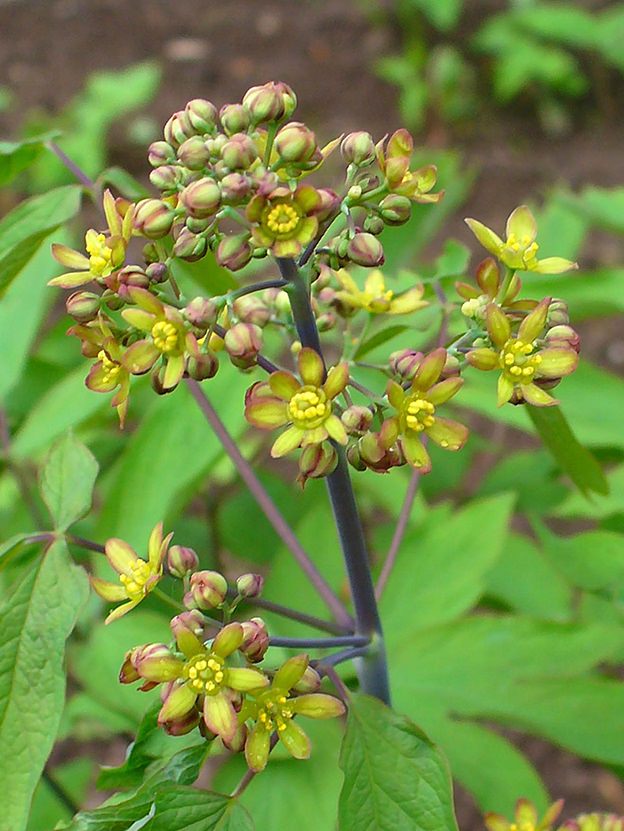
Years ago, when I first learned about the woodland plant blue cohosh (Caulophyllum thalictroides), I was determined to grow it. It’s at risk for extinction and therefore monitored closely by United Plant Savers, an organization that works to protect medicinal plants native to the U.S. I had seen a photo and fallen in love. The blue tinge it has in almost every stage of its growth captures my fascination.
Blue cohosh grows from a crown, like asparagus, and is most easily planted in the home garden by moving established plants, so I started with bare-root specimens. The seeds of blue cohosh are only successfully planted if they are still fresh or fresh/refrigerated. The plant doesn’t have any great strategies for moving itself about the planet, like other plants that use their tempting fruit or sticky burrs to cajole roaming animals to spreading their seeds. Instead, an established blue cohosh plant quietly drops its seeds into the soil nearby and a family patch results. The shy blue cohosh plant is a homebody that prefers to keep its babies close, which sounds nice, but unfortunately means that its livelihood is easily threatened by loss of habitat or overharvesting.
My first attempt at planting blue cohosh failed. I knew it liked to be deep in the forest under dense shade, but I ran out of time for fall planting and had to drop the roots into a temporary bed that was, unfortunately, in full sun. I thought if I put shade cloth over the plants that they would hold out until I could move them, but that wasn’t the case. The delicate, purple new leaves emerged from the ground in the spring, felt threatened by too much sun and quickly withered.
Blue cohosh likes to grow under a mixed hardwood canopy in a community of its friends. Without a neighborhood of bloodroot, black cohosh, ginseng, goldenseal and violets, the soil isn’t quite right for blue cohosh. Having learned my lesson, I tried planting it again and worked hard to develop what’s now an established blue cohosh patch.
These days, I sit on a bench under my hawthorn tree and watch the purple shoots turn into a branching canopy of blue-green leaves. I have yet to see the yellow flower or the blue berry the plant is named for, but the plants have been established for only a year.
In three years, the roots will be old enough to take medicine if I’d like. Traditionally, blue cohosh has been used in the final week of pregnancy to prepare the uterus for labor. I kept it as a tincture in my birth kit, with the plan to take one to three drops to help if labor stalled.
As blue cohosh is becoming more difficult to find in its natural habitat, many in the herbal community are using motherwort (Leonurus cardiaca) as a replacement for blue cohosh. I won’t be taking any of my blue cohosh roots for medicine. I am content to know that this plant, which is too shy to make an obvious plan for extending its habitat, has instead bewitched me with its delicacy and extraordinary coloring—causing me to move part of its family clan from southern Ohio to a shaded bed here on my property. Perhaps there is a plan after all and I am only playing my unwitting part.




